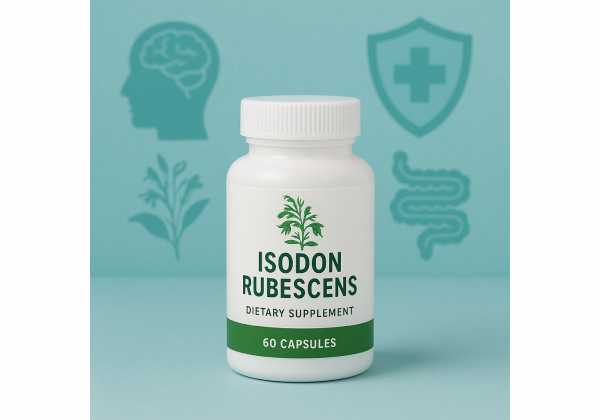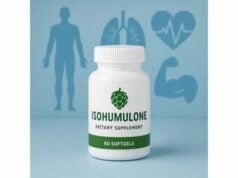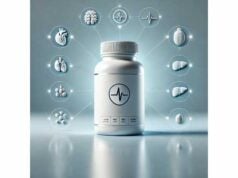
Isodon rubescens—also known by its older botanical name Rabdosia rubescens and by the Chinese name Donglingcao—is an aromatic member of the mint family long used for sore throats, swelling, and digestive discomfort. Modern laboratories have mapped a rich profile of ent-kaurane diterpenoids (notably oridonin and ponicidin), phenolic acids, and essential oils that influence inflammation, cell stress responses, and immune balance. In preclinical and early human research, extracts of the plant and isolated oridonin have shown signals in oncology support, respiratory comfort, and gastrointestinal health, along with a growing interest in cognitive and metabolic resilience. This guide translates the science into practical terms: what the plant contains and how it works, where benefits seem most realistic, how people use it in modern products, what a cautious dose plan looks like, and when to avoid it. You will also find clear safety guardrails and quality checkpoints to evaluate any supplement label with confidence.
Key Insights
- Primary actives are ent-kaurane diterpenoids (especially oridonin) that modulate inflammation, apoptosis, and oxidative stress.
- Evidence is strongest in preclinical models; human data exist for throat and upper GI comfort and for adjuvant oncology contexts but remain limited.
- Conservative trial-aligned intakes: 300–1,500 mg/day of standardized leaf–stem extract or 10–60 mg/day of purified oridonin (research/physician-directed), taken with meals.
- Avoid use in pregnancy, breastfeeding, children, and with hepatotoxic or narrow-index drugs unless a clinician manages the plan.
Table of Contents
- What Is Isodon rubescens and how it works
- Evidence-backed benefits and limitations
- Practical ways to use it
- How much Isodon rubescens per day?
- Safety: who should avoid and interactions
- What the research really says
What Is Isodon rubescens and how it works
Isodon rubescens is a perennial herb native to East Asia, historically brewed as a bitter tea or combined with other botanicals for sore throat, hoarseness, and inflammatory swelling. Botanically it belongs to Lamiaceae, and chemically it is notable for ent-kaurane diterpenoids—especially oridonin, ponicidin, rubescensin A–D, and allied molecules—plus rosmarinic acid, caffeic derivatives, and volatile oils. Extracts from leaf and stem are most common, though roots and flowers contain overlapping profiles. As with many aromatic mints, the plant’s scent hints at a complex secondary-metabolite economy designed to help the plant manage oxidative challenges and pests—traits that, when thoughtfully harnessed, can influence human physiology.
Mechanistically, the best-characterized compound is oridonin. It touches several pathways that collectively modulate how cells respond to stress:
- Inflammation control. Oridonin and related diterpenoids down-shift transcription factors that drive inflammatory cascades (for example, NF-κB, AP-1) and tune inflammasome components that amplify cytokine release. In mucosal tissues, that can translate into less edema, reduced leukocyte infiltration, and calmer cytokine profiles during challenge.
- Redox and cytoprotection. Compounds from the plant upregulate endogenous antioxidant programs and phase II enzymes, improving tolerance to reactive oxygen species. In cell culture and animal tissues, this corresponds to lower markers of lipid peroxidation and DNA damage after insults.
- Programmed cell death and cell-cycle effects. Ent-kaurane diterpenoids can tip the balance toward apoptosis in rapidly dividing cells by influencing mitochondrial integrity, Bcl-2 family dynamics, and caspase activation, while also arresting the cell cycle at key checkpoints. This property underlies much of the oncology interest.
- Immune modulation. Beyond simple suppression, extracts show context-dependent effects on T-cell and macrophage signaling, sometimes restoring balance where responses are excessive or misdirected.
- Barrier and microbiota crosstalk. Preliminary work points to improved epithelial barrier proteins and shifts in gut microbial composition consistent with lower inflammatory tone. While early, these signals add a plausible gut–immune axis mechanism to the picture.
Pharmacokinetically, oridonin has modest oral bioavailability due to limited solubility and first-pass metabolism. Newer delivery systems—lipid vehicles, nanosuspensions, and structural analogs—aim to improve exposure and tissue targeting. This matters for consumers because “milligrams on the label” do not guarantee equivalent systemic levels across brands or formats. Standardization (per-capsule amounts of marker compounds verified by HPLC) and formulation transparency are practical proxies for quality.
Finally, it helps to situate Isodon rubescens among related species. Several Isodon (Rabdosia) plants share overlapping diterpenoids yet differ in ratios and co-constituents. Reputable products identify the species, plant part, and extraction method, and confirm identity with chromatographic fingerprints. That level of clarity reduces variability and improves the odds that a bottle in your hand matches the literature you are reading.
Evidence-backed benefits and limitations
Because this herb has a long folk history, it’s tempting to assign it broad powers. A realistic, people-first view distinguishes between what is established, what is promising, and what remains speculative.
Throat and upper airway comfort. Traditional use targets sore, swollen tissues in the mouth and throat. The lab mechanisms—anti-inflammatory signaling, antioxidant effects, and possible antimicrobial activity—cohere with that experience. Modern lozenges, sprays, and teas leverage these properties for short-term symptomatic relief. While large randomized trials are limited, user-reported outcomes often include faster resolution of hoarseness and less scratchiness when used several times daily during the first 48–72 hours of symptoms, alongside rest and fluids.
Gastrointestinal and mucosal support. In animal models of chemically induced gastric or intestinal irritation, extracts reduce mucosal injury scores and normalize pro-inflammatory markers. Some studies show improved tight-junction proteins and lower oxidative stress in the gut wall. Practically, people reach for the herb in mild, self-limited upper-GI upset; when used with food and adequate hydration, many report calmer digestion. For chronic or severe GI conditions, medical care remains the standard, and botanicals serve—if at all—as adjuncts.
Oncology research (adjuvant context). Isodon rubescens and oridonin have a decades-long research trail in cell and animal models across leukemia, breast, liver, gastric, and esophageal lines. Signals include slowed proliferation, enhanced apoptosis, reduced angiogenesis, and improved sensitivity to conventional chemotherapy in vitro. Small and older clinical experiences—particularly in esophageal cancer—suggest symptom relief and possible potentiation when combined with standard regimens. However, modern, well-controlled human trials are sparse. For patients, that means any use belongs within a clinician-directed plan, not as a replacement for evidence-based care.
Immune and inflammatory tone. People with flare-prone airways or joints sometimes report steadier comfort when layering the herb atop foundational habits (sleep regularity, nutrient-dense diet, gentle movement). Objective markers in humans are limited, but the mechanistic plausibility is strong. Measurable benefits most often appear when baseline inflammation is diet- and stress-related rather than driven by advanced structural disease.
Cognitive and metabolic angles (early stage). Oridonin has been explored for neuroprotective signaling and insulin-sensitizing pathways in preclinical settings. These raise interesting possibilities for healthy aging and metabolic balance, yet human data remain preliminary. If you are curious, frame expectations: incremental support rather than dramatic change, and only when combined with consistent sleep, protein-forward meals, and daily movement.
What remains weak or unproven. Claims of rapid weight loss, “immune boosts,” or pan-cancer cures do not reflect the evidence. Likewise, extrapolating high-dose, purified-compound results to low-dose kitchen teas, or vice versa, is unreliable. Quality and standardization matter; many commercial products contain variable amounts of marker compounds, and whole-plant preparations differ from isolated oridonin in both potency and safety profile.
The bottom line: benefits are most credible for short-term throat comfort and as a thoughtful adjunct where inflammatory tone is high, with research-stage oncology and neuro-metabolic possibilities under active study. Translate enthusiasm into careful, low-risk practice rather than into sweeping promises.
Practical ways to use it
Decide on the format that fits your goal and lifestyle.
- Teas and traditional decoctions. These are approachable and inexpensive. A typical at-home preparation steeps 2–4 g of dried leaf–stem in hot water for 10–20 minutes, sipped up to three times daily during acute throat discomfort. Teas provide a broad spectrum of constituents but relatively low oridonin per serving, which may be desirable for sensitive users.
- Standardized capsules or tablets. These disclose per-serving milligrams of extract and often list oridonin or ponicidin content verified by HPLC. For day-to-day use, standardized extracts offer predictability. Look for species and plant part identification, extraction solvent (often ethanol–water), and third-party testing.
- Tinctures and liquid extracts. Liquids allow flexible titration and may absorb faster for some people, but taste can be intensely bitter. Choose products that specify herb-to-menstruum ratio and provide a conversion to approximate milligrams of extract per milliliter.
- Purified oridonin (research/physician-directed). Single-compound capsules or compounded preparations appear in research settings. Because exposure can be much higher than with teas, medical oversight is essential.
Timing and co-ingestion. Take with food to improve tolerability and absorption, especially if the extract is concentrated. For throat support, slow-sipping warm tea or using a lozenge creates direct mucosal contact before swallowing. For general inflammatory tone, consistent twice-daily dosing tends to produce steadier effects than sporadic use.
Stacking sensibly.
- Pairs well with: honey or demulcent herbs for throat comfort; magnesium, omega-3s, and gentle mobility work for head/neck tension; sleep hygiene and protein-rich meals for immune resilience.
- Use caution with: other botanicals that strongly affect liver enzymes, or products already burdening the liver (alcohol, high-dose acetaminophen). If you already take multiple supplements, inventory them and remove redundancies before adding another.
Quality checklist before you buy.
- Identity: full Latin binomial, plant part, and origin.
- Potency: marker compounds (e.g., oridonin) quantified per serving; chromatographic fingerprint available.
- Contaminants: certificates covering heavy metals, pesticides, residual solvents, microbes, and mycotoxins.
- Manufacturing: lot number, expiry date, and a way to contact the company for lab reports.
- Formulation clarity: excipients listed, and any allergens disclosed.
Track outcomes that matter to you. During a 2–4-week trial, score your main symptoms daily (0–10 scale), note any side effects (skin, GI, energy), and keep your routine otherwise stable. If there’s no meaningful change by week four, reconsider the plan; if there is, consider cycling (periodic breaks) to reassess need.
When lifestyle is enough. If your throat soreness stems from shouting at a game, dry office air, or reflux-prone late meals, addressing those triggers will often matter more than any herb. Use Isodon rubescens to complement—not replace—hydration, voice rest, humidification, and reflux hygiene.
How much Isodon rubescens per day?
There is no official dietary reference intake for this herb. Practical ranges come from traditional use, modern product design, and research exposures. Always individualize for body size, sensitivity, and goals, and involve a clinician if you have medical conditions.
Traditional preparations
- Tea for throat comfort: 2–4 g dried aerial parts in hot water per cup, up to 2–3 cups/day for 3–7 days. If bitterness or GI sensitivity is an issue, dilute and add honey or marshmallow root to soften the profile.
- Gargle or lozenge: follow label directions; these deliver local contact with minimal systemic exposure.
Standardized extracts (general wellness/adjunct use)
- Conservative daily range: 300–1,500 mg/day of extract (often divided twice daily), taken with meals. The lower end suits maintenance; higher end is typically used for short trials of 2–4 weeks targeting stubborn throat or upper-GI discomfort. Choose products that state the percentage or absolute milligrams of marker compounds so you can compare across brands.
Purified oridonin (research/clinician-guided)
- Exploratory range seen in specialty products: 10–60 mg/day, divided with food. Because exposure and pharmacokinetics differ from whole-plant extracts, medical oversight is essential—especially if you take other medications.
Timing and duration
- Short-term symptomatic use: 3–7 days, then taper off as symptoms resolve.
- Adjunct for inflammatory tone: 2–4 weeks, then reassess and consider a break (for example, 2 weeks off).
- Do not escalate beyond label directions without professional guidance, and do not stack multiple high-potency products containing the same actives.
Special populations
- Older adults or low body weight: start at the low end and titrate slowly.
- Plant-based diets with many polyphenols: you may be more sensitive to GI effects; keep doses modest.
- Athletes during heavy blocks: if using for throat/airway comfort, anchor dosing to meals and avoid new supplements in the 48 hours before competition until you know your personal response.
Signs you have likely reached “enough.” Your main symptom score falls by a couple of points, throat feels less scratchy, or post-meal comfort improves—without new side effects. Pushing higher rarely adds benefit and can increase risk.
The dosing message is simple: start low, take with food, give it a fair but finite trial, and prioritize objective markers of benefit over the allure of round numbers.
Safety: who should avoid and interactions
Overall, Isodon rubescens appears well tolerated at culinary and conservative supplemental exposures, but “natural” does not mean risk-free. Respect these guardrails:
Who should not use without medical supervision
- Pregnant or breastfeeding individuals. Safety data are insufficient, and diterpenoids can be pharmacologically active in ways that raise theoretical concerns.
- Children and adolescents. Reserve for physician-directed care when benefits clearly outweigh risks.
- People with significant liver or kidney disease. Many botanicals are metabolized in the liver and eliminated renally; err on the side of caution.
- Anyone on narrow-therapeutic-index medications (for example, certain antiarrhythmics, immunosuppressants, warfarin, or chemotherapy). Additions that alter enzymes or transporters can change drug levels.
Possible side effects (usually mild and dose-related)
- Gastrointestinal: bitterness, queasiness, reflux, looser stools. Taking with food, splitting doses, or using tea rather than high-potency capsules often fixes this.
- Headache or lightheadedness: uncommon; monitor overall hydration and meal timing.
- Allergy: rare; avoid if you’ve reacted to Lamiaceae herbs (mint family) previously.
- Skin sensitivity: infrequent; discontinue if rash develops.
Drug–herb interaction considerations
- Chemotherapy and targeted oncology drugs: do not add without your oncology team’s knowledge; scheduling, dose, and lab monitoring matter.
- Anticoagulants and antiplatelets: inflammatory shifts can change clotting dynamics; clinicians may prefer to keep regimens stable.
- Hepatotoxic agents (including frequent alcohol): layering multiple liver-burdening exposures increases risk. Choose one change at a time and monitor liver enzymes when appropriate.
Quality and contamination risks
- Work with brands that publish lot-specific certificates of analysis. Look for limits on heavy metals, pesticides, and solvents, plus microbial and mycotoxin testing. Botanicals concentrated from large plant volumes can magnify contaminants if sourcing is poor.
Stop rules and when to seek care
- Immediate stop if you develop severe abdominal pain, dark urine, yellowing of skin/eyes, easy bruising, black stools, persistent vomiting, or new neurologic symptoms.
- Call your clinician if symptoms prompting use do not improve as expected (for example, persistent sore throat with fever or trouble swallowing).
Alcohol and hot-beverage cautions
- Very hot beverages can irritate mucosa; let teas cool to a comfortable temperature. If you drink alcohol, keep intake modest or abstain during trials to reduce liver load and avoid confounding results.
The safety message: keep doses conservative, avoid high-risk stacking, and involve your clinician if you take prescription medications or have chronic conditions. Most adverse experiences are preventable with measured, label-guided use.
What the research really says
A balanced reading of the literature suggests cautious optimism paired with humility about gaps.
Strengths of the evidence
- Mechanistic coherence. The same diterpenoid scaffold shows reproducible effects across inflammation, apoptosis, and oxidative stress in multiple cell types. This cross-support strengthens biological plausibility for symptom relief in tissues prone to inflammatory irritation (throat, GI mucosa).
- Breadth of preclinical oncology data. From leukemias to digestive-tract lines, oridonin and companions consistently slow proliferation and promote apoptosis, often synergizing with standard drugs in vitro. Animal models extend these signals to tumor growth delay and angiogenesis modulation.
- Traditional use aligns with lab signals. Historical throat and swelling applications match anti-inflammatory and antioxidant mechanisms, lending real-world context to modern findings.
- Formulation science is advancing. New delivery systems address solubility and bioavailability challenges, a necessary step for any future clinical translation beyond teas.
Limits and uncertainties
- Human trials remain small and heterogeneous. Studies vary in preparation (whole herb vs. isolated compound), dose, duration, and endpoints. Many are open-label or adjunctive, complicating attribution.
- Standardization issues. Commercial products often differ from research materials. Without verified marker levels, two “500 mg” capsules can deliver very different exposures.
- Safety at higher exposures is not fully mapped. While culinary use is reassuring, concentrated, long-term dosing—especially of purified compounds—requires more data on liver enzymes, drug interactions, and reproductive safety.
Decision guidance for readers
- Best fit now: short-term throat comfort and general inflammatory balance in otherwise healthy adults who prefer plant-forward strategies—paired with sleep, hydration, and voice or diet hygiene.
- Use with supervision: any adjuvant oncology interest, chronic inflammatory disease, or combination with prescription drugs.
- Not a fit: pregnancy, breastfeeding, pediatric self-use, and anyone hoping for quick fixes where lifestyle drivers dominate.
What to watch next
- Head-to-head trials of standardized extract vs. purified oridonin with biomarker-anchored endpoints, dose-finding studies that include pharmacokinetics in humans, and interaction trials with common medications. As these arrive, dose guidance and safety confidence will sharpen.
Taken together, Isodon rubescens is a promising, tradition-rooted herb best used today as a complementary tool—one that can add comfort and resilience at modest doses while you continue prioritizing the fundamentals that drive health outcomes.
References
- Isodon rubescens (Hemls.) Hara. (2022)
- Oridonin: A Review of Its Pharmacology, Pharmacokinetics and Toxicity (2021) (Systematic Review)
- Oridonin from Rabdosia rubescens: An emerging potential anticancer agent (2024) (Systematic Review)
- Inhibitory Effects of Rabdosia rubescens in Esophageal Squamous Cell Carcinoma (2022)
- Advanced Nanovehicle Delivery Systems for Oridonin (2024) (Review)
Medical Disclaimer
This guide is educational and not a substitute for personalized medical advice, diagnosis, or treatment. Always consult a qualified healthcare professional before starting, stopping, or combining any supplement, especially if you are pregnant or breastfeeding, have liver or kidney disease, take prescription medications, or are considering Isodon rubescens as an oncology adjunct. Use standardized, tested products; follow label directions; and stop immediately if you experience concerning symptoms.
If this article was useful, please consider sharing it on Facebook, X (formerly Twitter), or your preferred platform, and follow us for more careful, people-first guides. Your support helps us continue creating high-quality, evidence-informed resources.










